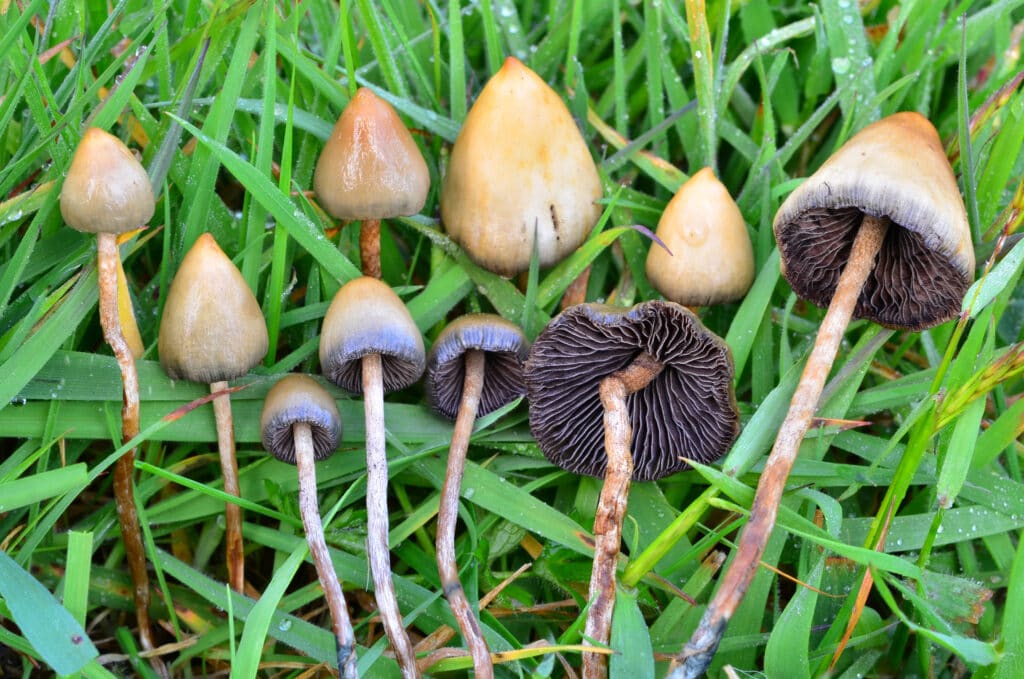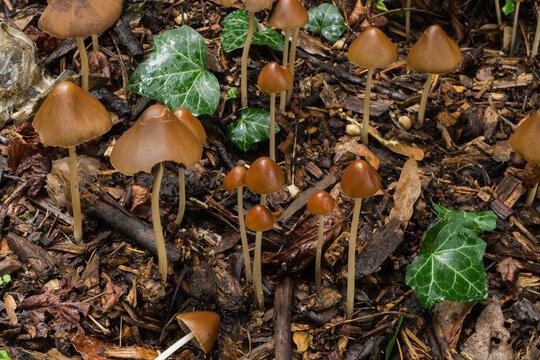Everything You Need To Know About Liberty Caps
These little shrooms are thought to be the most common naturally growing magic mushrooms in the world. Not only that; despite their modest size when compared to their other Psilocybe siblings, they rank as the 3rd most psychedelically potent. This ranking was based on tests performed in 1997 by German mycologist Dr Jochen Gartz and our favourite mushroom-movie-star, Paul Stamets. Like all Psilocybe shrooms the Liberty Cap contains psilocybin, as well as psilocin and baeocystin in varying quantities. Numerous studies, including one by Gartz in 1993, have quantified the percentages of psychoactive compounds found in Liberty Caps. They average it out to 1% (which is high!). However they can range from 0.2% to a whopping 2.37%, which is, in fact, the highest psilocybin concentration ever found in a mushroom.

Where and When?

The territory of the Liberty Cap is vast. They can be found across the north, south, east AND west of Europe, as well as the United States, Chile, New Zealand, Canada, India and Pakistan. They are thought to be the most widespread psilocybin shroom.
One of the reasons that the P. semilanceata/Liberty Cap is so widespread is that its preferred environment is found all over the globe. Happily fruiting in groups or alone, this mushroom tends to like grasslands, such as fields, meadows or even garden lawns. They are especially likely to be found in grassland that has been fertilized with animal dung, such as cow or sheep. However, to be specific, it doesn’t grow directly on dung like some other mushrooms. P. semilanceata is a fan of rich, acidic soil.
Look-Alikes
There are a few mushrooms that have a resemblance to Psilocybe semilanceata. These include Panaeolus semiovatus (or the Dung Roundhead)— although this is generally larger and does not have a pointed cap. The Panaeolina foenisecii (or Mower’s Mushroom) is also generally larger but the confusion lies in its similar colour. It also generally doesn’t have a pointed cap.
As always, foraging for mushrooms in the wild is not recommended, even professional mycologists can sometimes make mistakes, which can be deadly. (This is why we recommend our grow kits, of course!)
Nicknames
The nickname ‘Liberty Cap’ has an ancient historical basis. In the late Roman era, pointed hats were worn by slaves that had been given their freedom and libertas (i.e. the right to vote— though, of course, only for men.) In subsequent history this conical cap has come to be associated with freedom, being used in both the American and French revolutions as a symbol of their quest for liberty. Seems pretty appropriate for a mushroom that can free your mind…
Historical Records
P. semilanceata was first catalogued in 1838 by Elias Magnus Fries, as agaricus semilanceatus in his publication ‘Epicrisis Systematis Mycologici’. However, in 1871 it was renamed as a Psilocybe. Fascinatingly, (and enjoyably for us), there is a written record of people experiencing they mystery shroom’s potent psychedelic properties long before it had been catalogued. In 1799 a man went foraging in London’s Green Park for mushrooms to feed his family. The mushrooms in question happened to be, of course, Psilocybe semilanceata.
They ate psychedelic mushrooms. For breakfast.

Luckily, there is detailed documentation of the subsequent involuntary psychedelic trip the family experienced. They all suffered from “vertigo” and in varying levels, compulsive laughter and dilated pupils. It’s safe to assume the father (who’s trip made him believe he was dying) thought twice before hunting for wild mushrooms again.
Vital Stats- How To Spot This Shroom!
As stated before, the Liberty Cap is not the most eye-catching of mushrooms. However, it is of course its beauty within that makes it worth identifying. Small in size, its colour can alter depending on its hydration level. Like many psychedelic mushrooms they can turn a bluish hue when bruised or handled, as this causes the psilocin within them to oxidize. They are also coated in a slimy, gelatinous film called a pellicle.

Cap: The cap is between 5—2.5mm in diameter and 6—22mm tall. The cap shape can vary from a bell or spear shape, to a sharp conical. It usually always has a nipple-shaped structure called a papilla topping it off. Unlike some shrooms its shape doesn’t tend to change much as it matures. When fresh, it can be coloured from a chestnut to a pale brown, and when dried fades to a paler yellowy-beige.
Gills: Pale coloured in youth, but quickly becoming brown and eventually purplish-brown at final maturity. However, the edges remain pallid. Spaced moderately beneath the cap, this mushroom’s gills are narrow and small.
Spores: Drop as dark grey, but mature to a purple-brown.
Stem: The stem (or stipe) is usually between 40—100mm long and around 0.75— 3mm thick. This thin stem is generally cylindrical with a silky smooth surface and flexible nature. It is pale in colour, but becoming darker brown or tan at the base, which often also has mycelium attached— which itself has a blue tinge.
Further Identification

Taste and Smell: The taste and smell of the Liberty Cap is described as farinaceous which means ‘containing starch’. Apparently similar to freshly ground flour.
Can I eat it? : It is edible, but hallucinogenic. Proceed with caution
Find it: Spread across the grasslands of the world.
When: Generally from summer to late autumn.
Family: Hymenogastraceae
Genus: Psilocybe
Species: semilanceata







